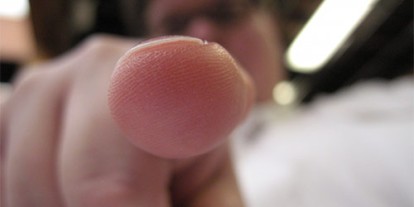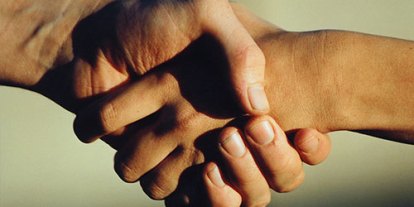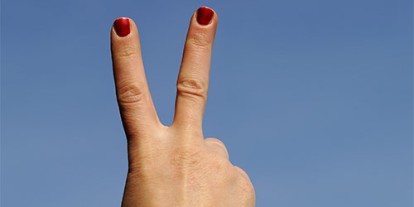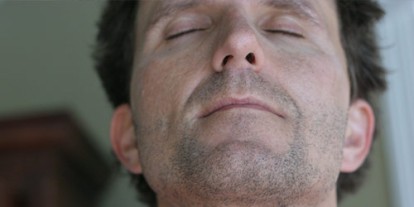A person waving his hand is typically saying hello, but for Chinese people it means go away.

Traveling is in almost every person’s bucket list. But culture is a huge account and it must not be overlooked. Being a travel enthusiast, I’ve learned from research that the typical gestures that we know means differently in other countries. Better to be wary about it than be in a disadvantaged side.
The “Okay” Sign

Photo from photoXpress
This is a sexual insult for Greeks, money for Japanese, obscene for Spanish, faggot for Venezuelans and Turkish, zero or worthless for French, and asshole in Mediterranean countries.
Unwelcoming Wave of Hands

Photo from hobvias sudoneighm’s flickr
Waving of hands is commonly welcoming as it denotes hi or hello. In Indians and Chinese people, it means no or go away. In Japanese people, it means I do not understand or I do not deserve this.
Despicable Thumbs Up

Photo from photoXpress
Although the thumbs up gesture is universally known to bear approval or appraisal in general, it is an insult to the people of Iraq, the biggest kind actually. Don’t do it there, as well as in Greece, Russia, Sardina, Italy, most of Latin America and West Africa because it’s like the fuck you sign for these countries.
Speak Now or Stop

Photo from photoXpress
Country singer Taylor Swift has an album called speak now. But Asian countries literally expect you to speak now when you raise your hand with your palm exposed. In the west, it means stop.
A Pointing Finger

Photo from a2gemma’s flickr
A pointing finger is rude across different cultures. Especially in Nepal, it means “wait and I will have something against you!”.
Prohibited Handshake

Photo from stock.xchng
In Islam and Judaism, handshake is prohibited among people of opposite sexes. And since left hands are used to wipe your ass after pooping, it is considered the dirty hands for Middle Eastern countries; so never shake using left hand in their territory.
The V Peace Sign

Photo from photoXpress
This is the peace sign. It is also used to indicate cuteness in photo for Asian countries such as Japan, Korea, China, Taiwan and Vietnam. At times, it could be a war sign since in Australia, New Zealand, South Africa, Ireland and United Kingdom.
“What are you looking at?”

Photo from airgap’s flickr
How rude it is when you talk and the other person is not looking at you. It is as if that person is not listening. Eye contact is really important in our conversations or mere interactions. Yet, staring is considered rude in Zimbabwe, Japan, China, and few other Asian countries as well. Staring or eye contact at women is also forbidden in Arab countries.
A Different Kind of Headshake

Photo from SuperFantastic’s flickr
Shake your head up and down – you’re saying yes. Shake your head sideways – you are saying no. In some middle eastern countries, it is the other way around. Same applies in Nepal and Greece.
Keep Your Soles of Feet Out of Sight

Photo from imageafter
In Arab countries and Egypt, it is rude to display your soles of feet. This is the reason why when you sit, you should not cross your legs. In India, feet are so unclean you should apologize if you touch anybody with it.
Good to know isn’t it?
More Moments for you:
Loath these Laws
10 Gorgeous World Leaders of 2012
What if.. Nationality is a Choice
Cultural Etiquettes: Things considered rude in different cultures; Helium 5 common American gestures that might insult the locals; Matador Network Cultural Gestures; Tripod Nepal Customs & Etiquette; Nepal Vista




Thanks for writing a very interesting article. As an Aussie, just wanted to clarify a couple of points for your readers though:
1) The peace sign with the palm facing out (as pictured above) is recognised as a friendly gesture here. It is only interpreted negatively when the same sign is inverted (ie forefinger and middle finger still raised, but palm facing inward) and an upward motion of the hand is made. This actually means “up yours” (ie a general indication of contempt) as opposed to “fuck off” (ie you would like the person to leave you alone).
2) In some cases, Indigenous people in Australia will not make eye contact with others as, in their culture, looking at a person in the face (particularly when someone is speaking to them) is considered to be disrespectful. Additionally, they may also not make eye contact with others when speaking themselves for the same reason.
Hope this helps people who are considering visiting here in the future!
Ooooooh I see now, thanks for the clarification. I’m feeling enlightened teehee and yes I will visit Perth next week for 9 days, good to know these stuffs, so again, thanks!
Interesting thanks
If you lightly flick your throat in Russia it signifies a desire to get drunk! That one could come in handy if at a bar and incapable of verbal communication. Great article though.
There was an article on BBC news recently about how we might go about communicating with an alien species if we encountered them. It seems like we have enough trouble with other humans!
Thanks for another interesting article.
It’s scary stuff isn’t it! Just to clarify, under the “Okay” sign, you say it is a sexual insult for Geeks, should that be Greeks? Hehe. I know one could argue that geeks have their own culture, but…
You’ve said it! HAHA thanks for pointing it out. Geez, people read that before you, I hope they didn’t think that I put Geeks in purpose
This is good information… Thanks for sharing.
Definitely did not know these important bits of information. I hope you didn’t have to learn these bits the hard way :)..
Interesting. I have one thing to add regarding the last item about the soles of a person’s feet in India (my parents emigrated more than 35 years ago, and even though I was born and grew up in the States, a part of me is still there.) There we touch the feet of an elder to show our respect to that person; it’s basically saying, with a gesture, that we revere that person’s age, wisdom, and experience so much that in comparison we ourselves belong at their feet. So touching the tops of a person’s feet in India is okay; in fact, it’ll probably earn you brownie points! The worst that could happen if you touch someone’s feet there is that you embarrass that person (in a good way) by making him/her feel like you’re giving too much respect. Which everyone will protest against but secretly be pleased about. :>
I was in Thailand for 9 weeks the summer of 1989 and there we were told not to point our feet at anyone when sitting down, and NEVER to pat someone on the head – even a child. But it’s okay to pick your teeth…with super long nails. On men. You just never know…
The one that caught me out was beckoning to waiters in Turkey with an upturned palm and fingers curling in. This is apparently about as rude as it gets (another ‘fuck you’) and so i was told quite quickly to, simply turn my palm over and wave them towards me downwards. It works.
J
If I ever travel outside the US, I’m keeping my hands in my pocket! Great article!
This is great. I will be lecturing on cultural differences and nonverbal communication on Monday night. Bookmarked this site for my students.
Thank you for being right on time.
This is great and super useful! I was just in Mexico City and may have made a blunder or two…I guess they don’t do “high fives” down there. lol…
Thanks for the insight and for promoting cultural awareness!
Very, very interesting! Thank you for the info!
Most of your info for Japan is spot on… with the “Okay” sign, if your palm is facing away from you, it’s a regular “Okay” sign. (9 times out of 10) If your palm is facing towards you, it means money.
Also, many older people here won’t point at things with their index finger (it’s rude, as you wrote), but they will point with their middle finger.
Hope I don’t sound picky… just trying to be helpful. 🙂
Such a great article! 2 thumbs up over here!
What I learned is that I’d better keep my uncultured self home until I do some research! I “talk” with my hands a lot!
Reblogged this on DeDeRants and commented:
This is good to know 😀
I learned a few of these in my Intercultural Communication course in college. Amazing to learn and always great to research a bit before you travel abroad.
What a fun post! Thank you for the info!
man just to make sure disinformation doesn’t hit too hard, the thumb up in Italy isn’t bad, since the roman times it’s been positive, as it meant “let him live” in gladiator fights, opposite to the thumb down, which meant “kill” so it’s a pretty long tradition.
no hard feelings, i just wanna make sure if you travel to italy, after someone insults you, you don’t say ok while smiling.
ps: as far as i recall, living in Manchester, if you wanna tell someone to fuck off you don’t do the peace sign, the back of the hand is facing while showing the index and middle finger.
this is interesting. the peace sign is so true. however, here in the Philippines, we take the peace sign on top of our companion’s head to make fun of him/her when taking pictures 😀
WOW This is interesting and important at the same time! I’m Indonesian, going to Australia next week and most definitely avoiding the “V peace” sign kekekeke thanks!
Great post. It’s good to know these things, even if you’re not a world traveler. So many people and cultures migrate to the most surprising places.
Cool post. I had heard about a few of these but not all of them. Crazy how something you think is so universal isn’t universal at all.
very interesting. do you have any tips for Finland 🙂